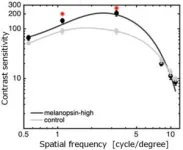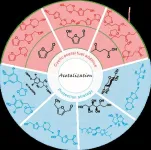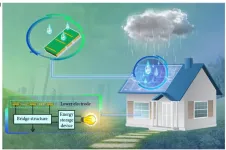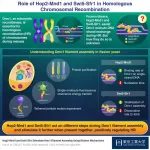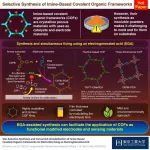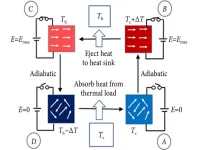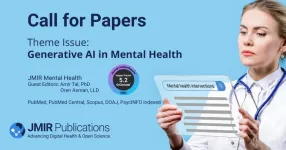(Press-News.org) A team of scientists, led by the researcher at the IAC and the University of La Laguna (ULL) Sebastién Comerón, has found that the galaxy NGC 1277 does not contain dark matter.This is the first time that a massive galaxy (it has a mass several times that of the Milky Way) does not show evidence for this invisible component of the universe. “This result does not fit in with the currently accepted cosmological models, which include dark matter” explains Comerón.
In the current standard model cosmology massive galaxies contain substantial quantities of dark matter, a type of matter which does not interact in the same way as normal matter; the only evidence for its existence is the strong gravitational pull which it exerts on the stars and the gas nearby, and this interacton is observable.
NGC 1277 is considered a prototype “relic galaxy” which means a galaxy which has had no interactions with its neighbours. Galaxies of this type are very rare, and they are considered the remnants of giant galaxies which formed in the early days of the universe.
“The importance of relic galaxies in helping us to understand how the first galaxies formed was the reason we decided to observe NGC 1277 with an integral field spectrograph” explains Comerón. “From the spectra we made kinematic maps which enabled us to work out the distribution of mass within the galaxy out to a radius of some 20,000 light years” he adds.
The team discovered that the mass distribution in NGC 1277 was just the distribution of the stars, and from this they inferred that within the radius observed there cannot be more than 5% of dark matter, although the observations are consistent with the complete absence of this component.
However, present cosmological models predict that a galaxy with the mass of NGC 1277 should have at least 10 % of their mass in the form of dark matter, with a maximum of 70 % in this form. "This discrepancy between the observations and what we would expect is a puzzle, and maybe even a challenge for the standard model” notes Ignacio Trujillo, a researcher at the IAC and the ULL, who participated in the study.
The article suggests two possible explanations for the lack of dark matter in NGC 1277. “One is that the gravitational interaction with the surrounding medium within the galaxy cluster in which this galaxy is situated has stripped out the dark matter” comments Anna Ferré-Mateu, a researcher at the IAC and the ULL who also participated in the study. “The other is that the dark matter was driven out of the system when the galaxy formed by the merging of protogalactic fragments, which gave rise to the relic galaxy”.
For the authors of the study neither of these explanations is fully satisfactory “so the puzzle of how a massive galaxy can form without dark matter remains a puzzle” insists Comerón. In order to continue researching the mystery the team plans to make new observations with the WEAVE instrument on the William Herschel Telescope (WHT) at the Roque de los Muchachos Observatory, in the Canary Island of La Palma
If this the result, that NGC 1277 does not have dark matter, is confirmed, it would cast strong doubt on alternative models for dark matter, namely theories in which gravity is modified and the major part of the gravitational attraction within galaxies is due to a slight change in the law of gravity on large scales. “Although the dark matter in a specific galaxy can be lost, a modified law of gravity must be universal, it cannot have exceptions, so that a galaxy without dark matter is a refutation of this type of alternatives to dark matter” notes Trujillo.
END
The puzzle of the galaxy with no dark matter
2023-07-19
ELSE PRESS RELEASES FROM THIS DATE:
New catalysts for solar hydrogen production
2023-07-19
Finding sustainable and clean fuels is crucial in today’s global energy and climate crisis. One promising candidate that is increasingly gaining relevance is hydrogen. However, today’s industrial hydrogen production still has a considerable CO2 footprint, especially considering processes like steam reforming or non-sustainable electrolysis.
A team led by Prof. Dominik Eder from the Institute of Materials Chemistry (TU Wien) is therefore focusing on the development of environmentally friendly processes for obtaining hydrogen, for example by photocatalysis. This process enables the conversion of ...
Acetalization: A feasible and sustainable strategy for biomass valorization
2023-07-19
Biomass, mainly composed of lignocellulose and vegetable oil, has been acclaimed as one of the most promising sustainable sources of raw carbon material for the synthesis of transport fuels and value-added chemicals. The catalytic conversion of lignocellulose/vegetable oil and their related derivatives has attracted great attention in biomass valorization. Many elegant methods including hydrolysis, dehydration, hydrogenation, hydrogenolysis, oxidation, etherification, esterification, amination, aldol condensation, ...
Collecting energy from raindrops using solar panel technology
2023-07-19
When raindrops fall from the sky, they can produce a small amount of energy that can be harvested and turned into electricity. It is a small-scale version of hydropower, which uses the kinetic energy of moving water to produce electricity. Researchers have proposed that the energy collected from raindrops could be a potential source of clean, renewable power. However, this technology has been difficult to develop on a large scale, which has limited its practical application.
To collect raindrop energy, a device called a triboelectric ...
Unraveling the molecular basis of Dmc1 filament assembly in homologous recombination
2023-07-19
Homologous recombination (HR) is an important process that plays multiple crucial roles during meiosis, a type of cell cycle dedicated to sexual reproduction. During HR, homologous DNA molecules exchange their genetic material. During the meiotic prophase, DNA are clipped throughout the genome, forming numerous DNA double-strand breaks. Such DNA breaks attract homologous recombination enzymes, which promote pairing of homologous chromosomes.
Dmc1 is one such meiosis-specific recombinase in eukaryotes (organisms that have a clearly defined nucleus), ...
Simultaneous synthesis and fixing of covalent organic frameworks
2023-07-19
Covalent organic frameworks (COFs) are versatile materials composed of interconnected organic molecules held together by covalent bonds. These frameworks can be constructed in two-dimensional or three-dimensional (3D) forms which possess a unique combination of low density, high surface area, and easily tunable properties. Among the various types of COFs, imine-linked COFs have garnered considerable attention owing to their exceptional thermal and chemical stability as well as their broad scope of monomeric starting materials.
However, traditional bulk synthetic methods for COFs often yield powders that are insoluble ...
A cool way to keep things cool: the electrocaloric effect
2023-07-19
As necessary as cooling technologies are, we’re still operating on an outdated technology that can be considered a significant contributor to global warming and greenhouse gas emissions. Currently, vapor compression cycle-based cooling (VCC) is the standard for reliable cooling of air conditioning and refrigeration, but by switching to electrocaloric cooling (EC) researchers are hoping to create a more environmentally friendly, scalable and compressor-free method of cooling to benefit businesses, families and the environment.
The researchers published their work in iEnergy on ...
JMIR Publications acquires the Online Journal of Public Health Informatics, broadening its prestigious open access portfolio
2023-07-19
(Toronto July 19, 2023) Fully open access publisher JMIR Publications has acquired the Online Journal of Public Health Informatics (OJPHI), expanding its portfolio to 35 gold open access journals. This acquisition marks an open access milestone in JMIR Publications’ continued mission to keep openness at the heart of what it does.
Indexed in PubMed Central, OJPHI has been delivering the latest developments in the emerging field of public health informatics since 2009. The journal publishes research articles, book reviews, technology reviews, working papers, interviews, commentaries, and handpicked student capstone projects.
All ...
Call for Papers: Theme Issue on “Responsible Design, Integration, and Use of Generative AI in Mental Health”
2023-07-19
JMIR Medical Education (2023 Impact Factor 5.2) and Guest Editors: Amir Tal, PhD, and Oren Asman, LLD welcome submissions to a special theme issue examining "Responsible Design, Integration, and Use of Generative AI in Mental Health"
This special theme issue aims to unite various stakeholders in exploring the responsible use of generative artificial intelligence (GAI) within the mental health domain. The goal is to curate a collection of articles that examine the advantages, challenges, and potential risks associated with deploying GAI models ...
Light quality enhances contrast vision
2023-07-19
Prof Sei-ichi Tsujimura of the Nagoya City University and Prof Su-Ling Yeh of National Taiwan University and Kagoshima University, have discovered that our visual acuity (contrast sensitivity) can be improved by using a light with a special spectrum that can selectively stimulate melanopsin cells in the retina.
Background
The retina of our eye contains cone photoreceptor cells, which identify colors in bright environment, and rod photoreceptor cells, which work in the dark. It has long been thought that humans see and identify objects by these two types of photoreceptor cells alone. ...
Monitoring often excludes crucial river ecosystems; Can citizen science fill the gap?
2023-07-19
Intermittent rivers and ephemeral streams are the world's dominant river ecosystem, yet monitoring and management typically focus on rivers that flow year round. Writing in BioScience, Amélie Truchy of the French National Research Institute for Agriculture, Food, and the Environment (INRAE) and colleagues describe the problem, as well as a potential solution: citizen science.
The authors discuss the results from a new app, DRYRivERS, which allows scientist and nonscientist users alike to record data on ephemeral streams and intermittent ...

